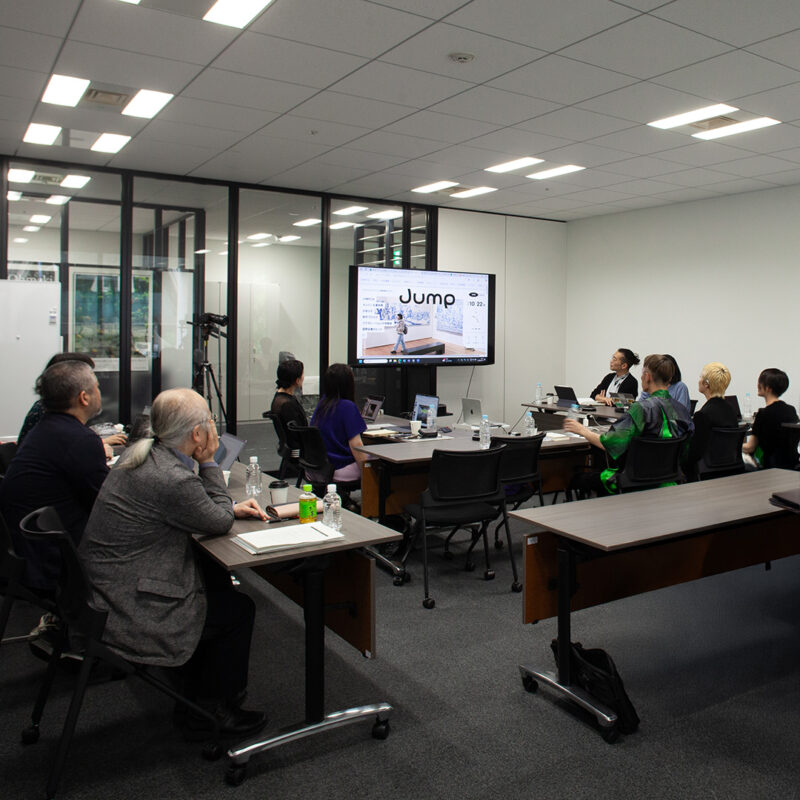JUMP regularly hosts an event called JUMP Meetup, which brings together participating artists, curators, and mentors who serve as advisors. These meetups provide a space for artists and curators to share updates and challenges, while mentors offer practical advice on international collaboration. They provide concrete support through feedback on the content and concepts of works, tips on giving presentations and writing texts to effectively communicate the substance and ideas behind them, and advice on coordinating and negotiating with organizations overseas.
Stories of Collaboration
JUMP Meetup No. 1 Report
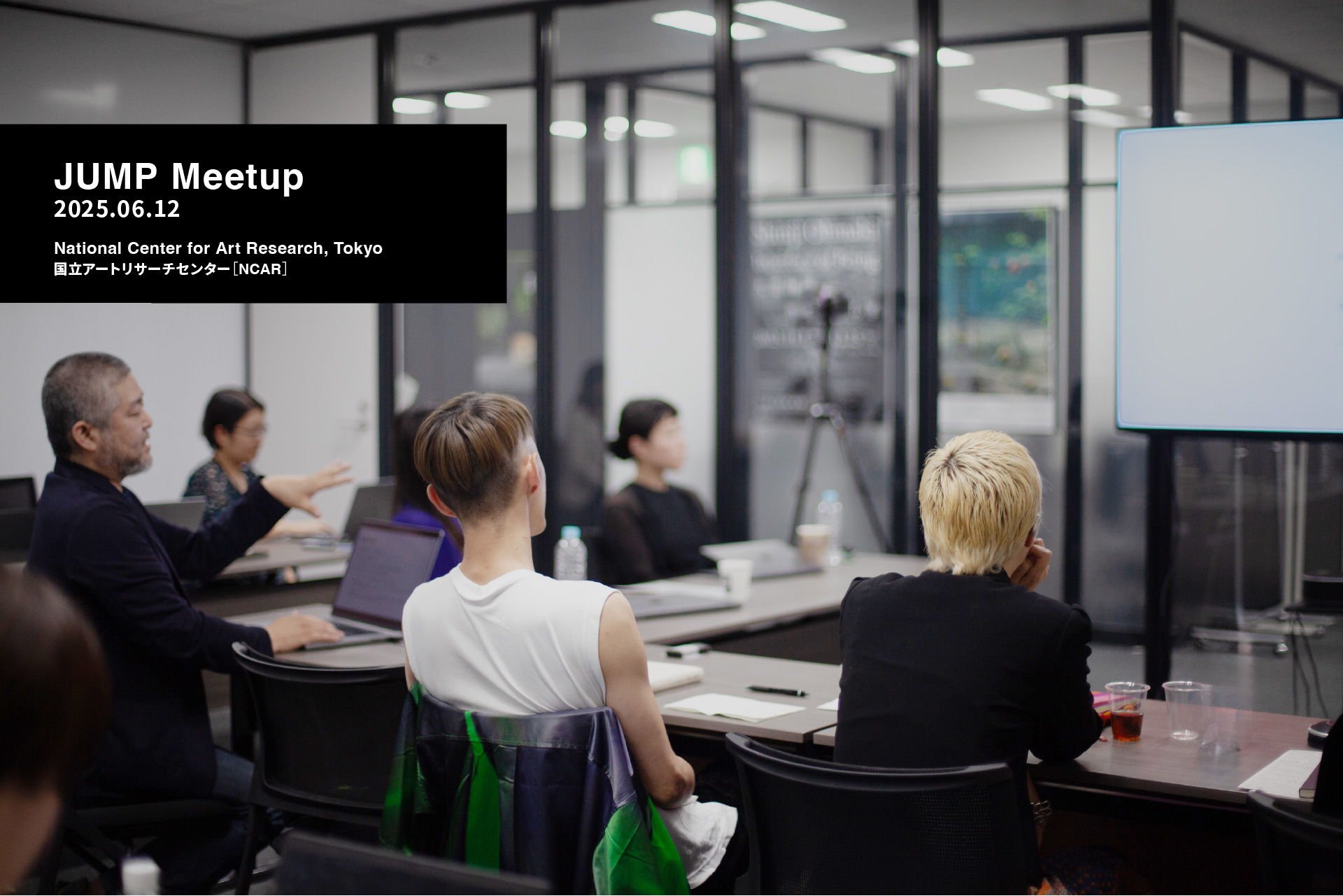 2025.10.16
2025.10.16
A JUMP Meetup convened at the National Center for Arts Research in Tokyo on June 12, 2025. Artists and curators participating in the JUMP program who are conducting research in Lisbon, Los Angeles, and Sydney gathered to share information on their progress and ideas for their work. In this meetup, through discussions among the participants and with advice from mentors, they dived deeper into how the projects will develop going forward.
Mentors Yasuda Atsuo (Director, The Museum of Art, Kochi) and Aida Daiya (Artistic Director, Yamaguchi Center for Arts and Media (YCAM)) participated in person, while Kataoka Mami (Director, National Center for Arts Research and Director, Mori Art Museum) and Hosaka Kenjiro (Director, Shiga Museum of Art) participated online from outside Japan. Each commented based on their respective experiences and positions, leading to a lively exchange of ideas.
Text: National Center for Arts Research; photos: Nakata Emi
Team progress reports
First, each of the three teams gave a status update. Endo Kaori (artist) and Arai Yasuhiro (Curator, Shiga Museum of Art) conducted research in three Australian cities (Brisbane, Sydney, and Canberra) over a ten-day period in April 2025. They toured the exhibition venue at The Art Gallery of New South Wales, and they have since made progress on planning the exhibition in light of the characteristics of the space.
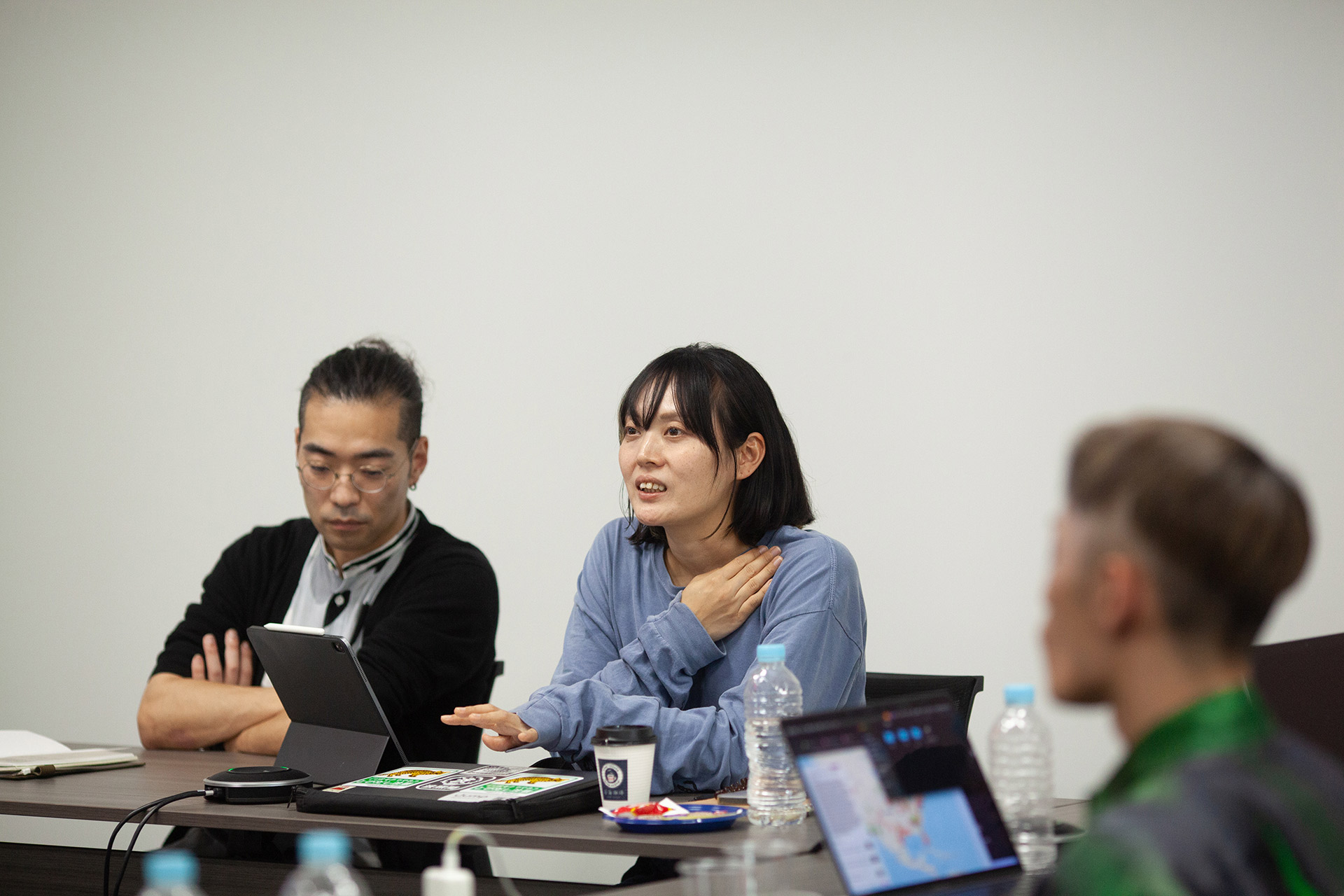
The MES artist duo (Arai Takeru and Tanikawa Kanae) and Tsukamoto Mari (Curator, The Museum of Art, Kochi) reported on the research conducted in Kochi City and Shimanto City in May 2025, and also on their plans for research to be conducted in Los Angeles in June, after the meetup. The exhibition venue, Geffen Contemporary at the Museum of Contemporary Art, Los Angeles (MOCA), is a space that was created by converting a warehouse, and they are considering plans for work that would take advantage of the characteristics of the space to combine video and performance art.
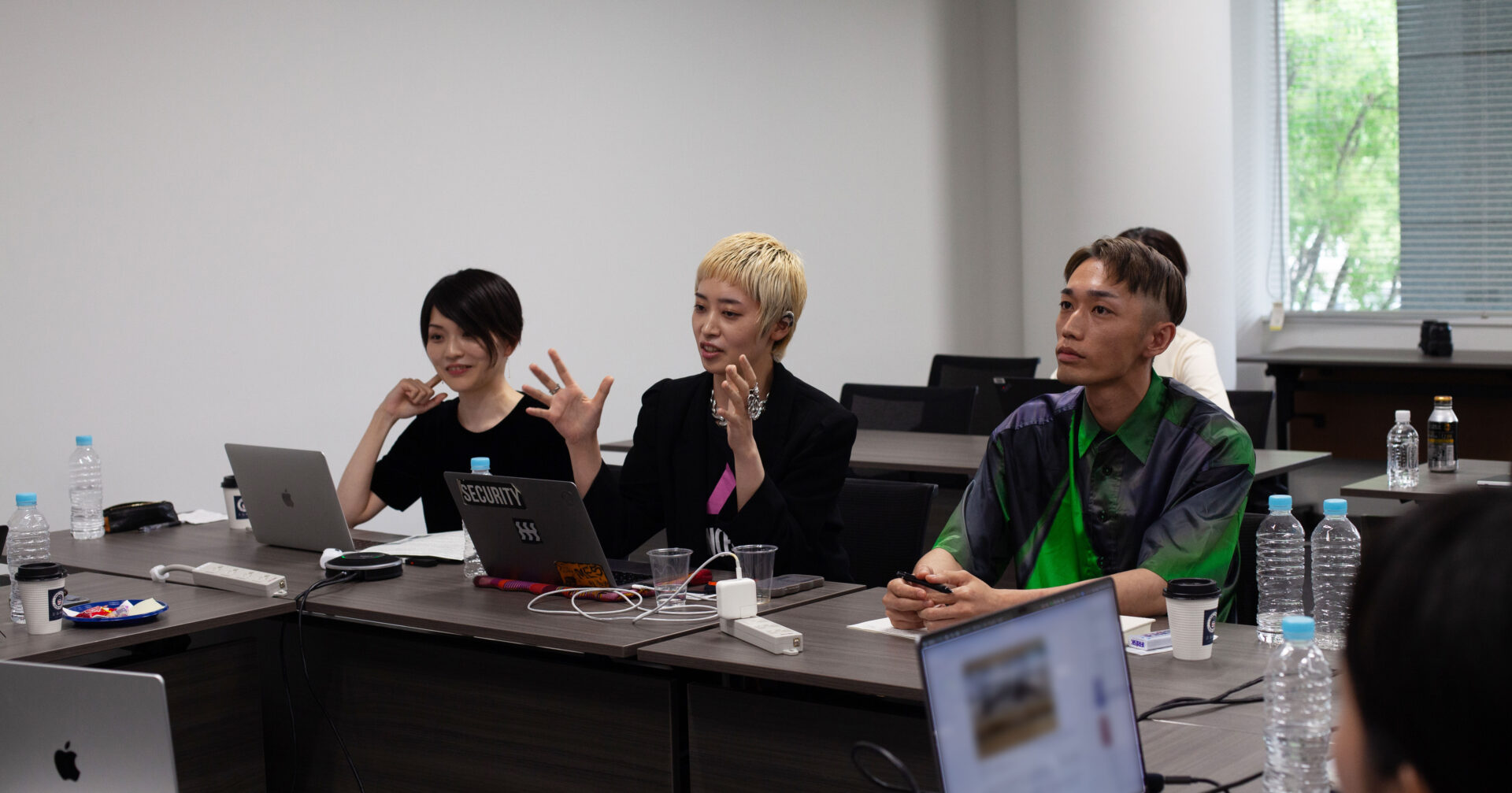
Aoyagi Natsumi (artist) and Mitome Sayaka (Curator, Yamaguchi Center for Arts and Media (YCAM)) spent about two weeks traveling around Portugal, visiting cities including Lisbon, Porto, Coimbra, and Fatima, to conduct research. They shared ideas about enhancing the visitor experience and encouraging dialog at the Centro de Arte Moderna Gulbenkian (CAM) venue through video works, sound installations, and various other approaches.
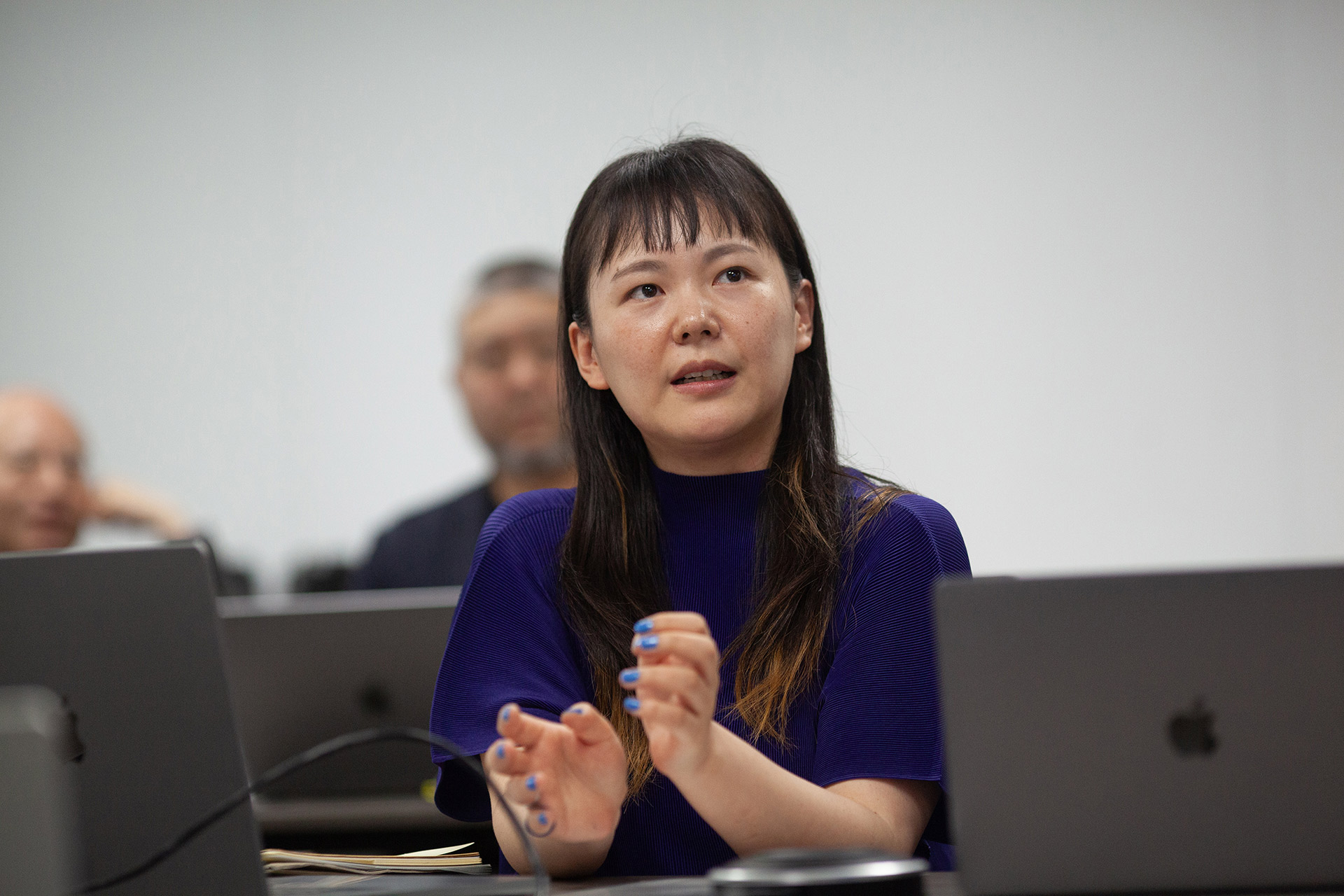
Mentor feedback
Based on their own experience, the four mentors offered feedback on each team's progress report. They provided input from various perspectives, from suggesting concrete steps to offering advice on how to collaborate internationally.
Yasuda emphasized the importance of conscientiously observing the cultural landscape of the area where a museum is located. He encouraged participants to carry out their research and creative work while bearing in mind differing perceptions of history and culture between Japan and the other countries. With respect to Los Angeles, he mentioned the geographic relationship between Kochi and California and the history of Japanese descendants in the US, and he expressed his hope that the work will reflect the elements that connect the two regions.
Aida pointed out that when conceiving a work that is grounded in research, clarifying the artist's own thinking and position on the theme helps to establish an axis that orients the work, allowing this to be conveyed to the audience. In addition to providing information to the Lisbon team that will be useful in their research, he said that he hopes that taking on technical challenges in collaboration with YCAM will widen the possibilities of expression.
Hosaka told the Sydney team about the importance of recognizing the differences in the histories and religious views of Australia and Japan. He emphasized the need to create powerful works that reach a diverse audience, including local residents and tourists. He spoke to the other teams about the importance of respecting the cultural landscape of each country, and also about the importance of documenting and sharing the production process.
Drawing on experience as the director of international exhibitions, Kataoka talked about her attitude toward handling delicate topics such as Indigenous peoples and religions, and about the importance of building relationships with local communities. She also touched on the issue of how to take the information and context obtained through research and turn it into works of art that will convey this to viewers, and she offered practical advice on how to constitute the exhibition and design the flow in ways that take advantage of a venue’s characteristics.
A common theme in the feedback provided by the four mentors was the importance of finding ways to deliver works grounded in research to visitors, based on a deep understanding and respect for culture and history. It was an opportunity for participants to hear many insights on developing and communicating works in the field of international collaboration.
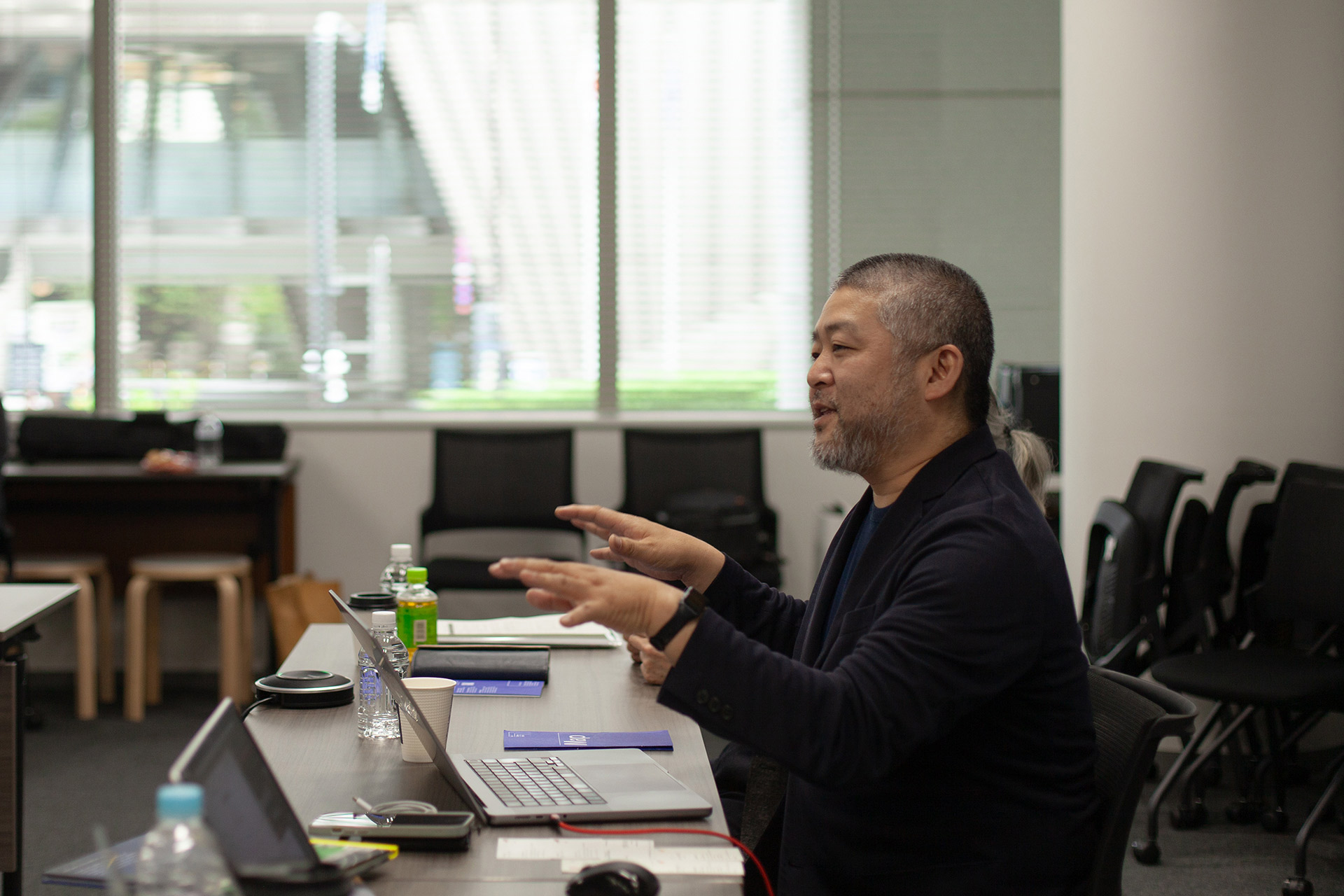
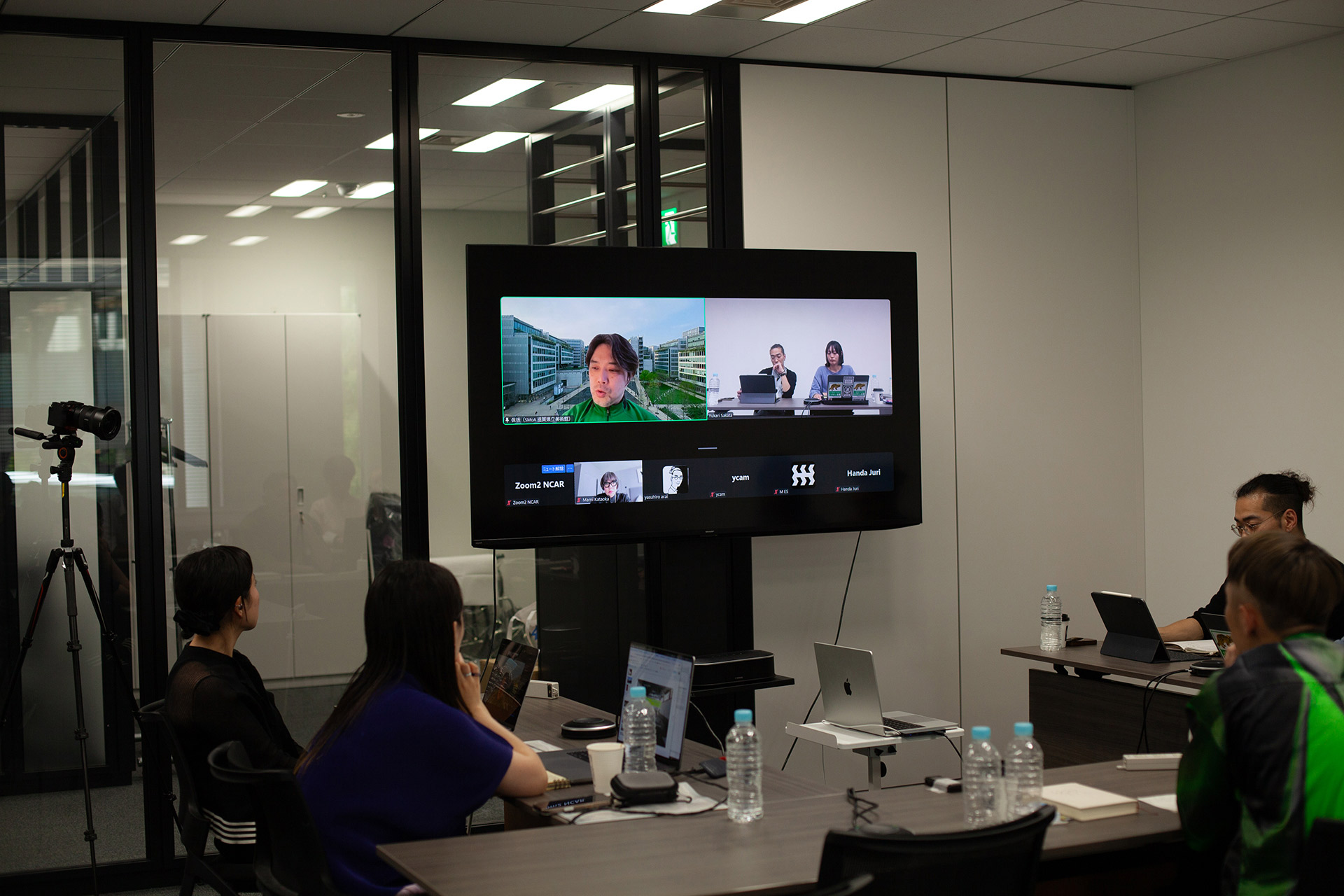
Recounting collaboration experiences
Kataoka and Hosaka participated in only the first half of the meetup online, while mentors Aida and Yasuda shared their experiences in international collaboration in the second half. Aida shared his experiences participating as a curator for Media/Art Kitchen, a Japan Foundation project to commemorate the fortieth year of ASEAN-Japan friendship and cooperation, in which he collaborated with thirteen curators from seven countries. He spoke about the interaction and sharing with local artists and collectives that happened in the course of creating an exhibition focusing on Southeast Asian media art over a period of about two years starting in 2012. He spoke about what he learned from different cultures and values, and how he continues to maintain those relationships, showing the significance of international collaboration.
Yasuda talked about two projects executed while he was serving in his previous role as director of the Curatorial Department and deputy director of the Hara Museum of Contemporary Art. The first was Extended Points: Three Contemporary Artists from Norway, which was mounted in collaboration with The National Museum of Norway in Oslo from 1997 to 1998. The second was Mercedes-Benz Art Scope, which has been presented by Mercedes-Benz Japan since 1991. The Hara Museum of Contemporary Art collaborated as a partner from 2003 until the museum's closure in 2021. This was an exchange program for contemporary artists from Japan and Germany, and the museum mounted exhibitions to show the works created by the artists-in-residence.
These examples provided thought-provoking accounts of practical experiences, covering topics including collaborative curatorial practices and the role of curators in artists’ research and creation activities.
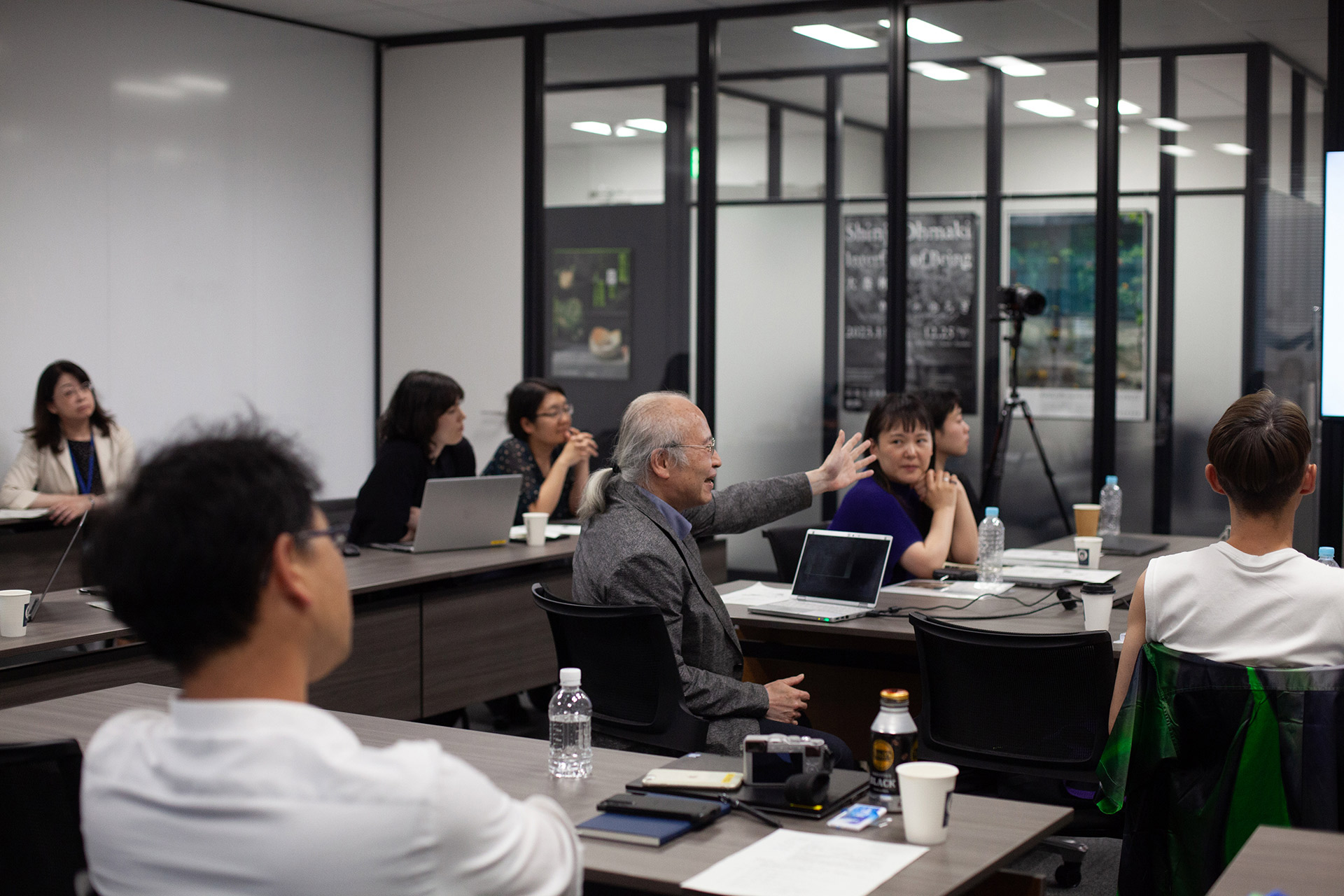
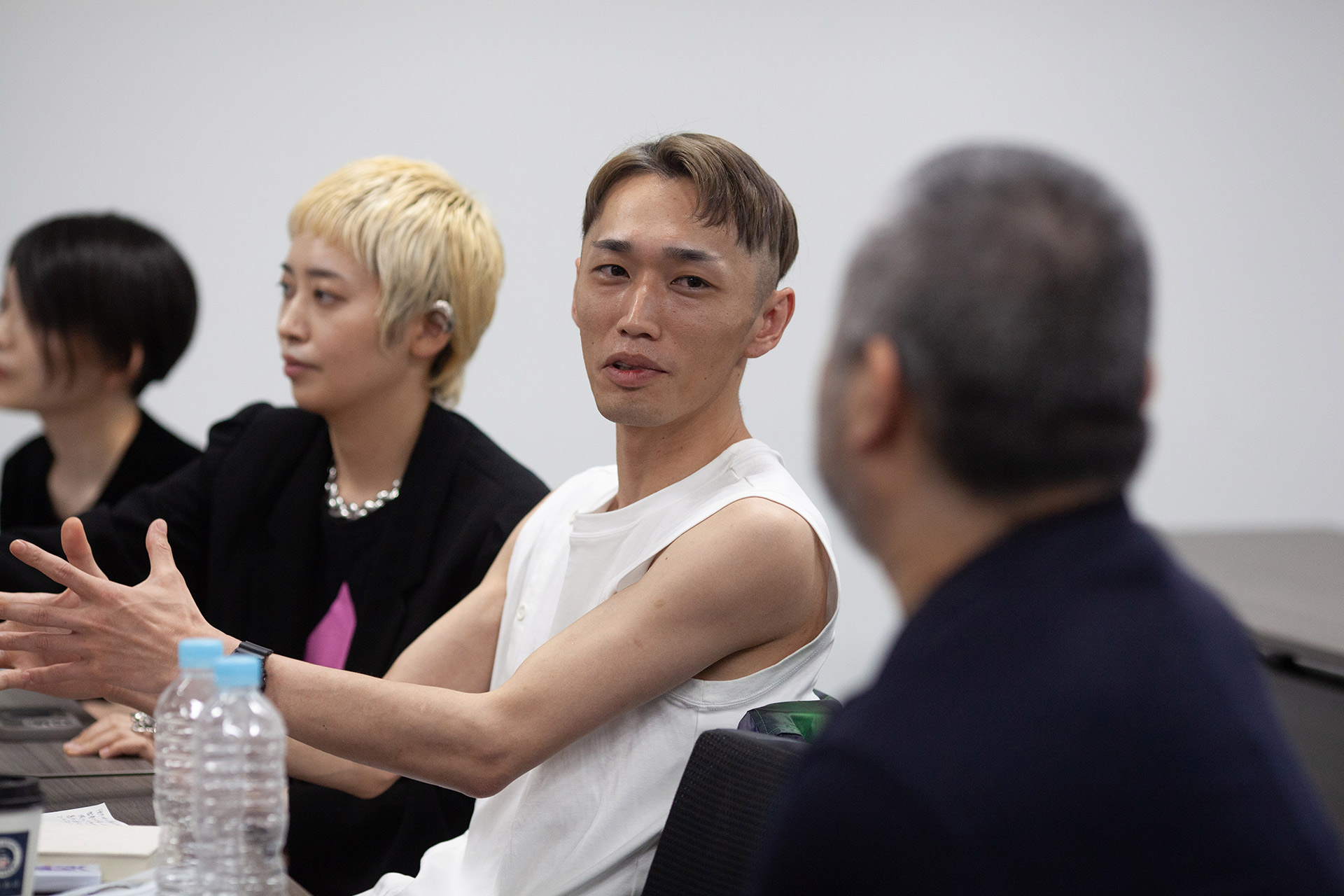
Artists and curators asked a variety of questions during the Q&A session, which provided a valuable learning opportunity for those preparing to create and exhibit work overseas. How will each team intensify its efforts going forward? What kind of conversation will they create with exhibition visitors? This will be interesting to watch as JUMP progresses.
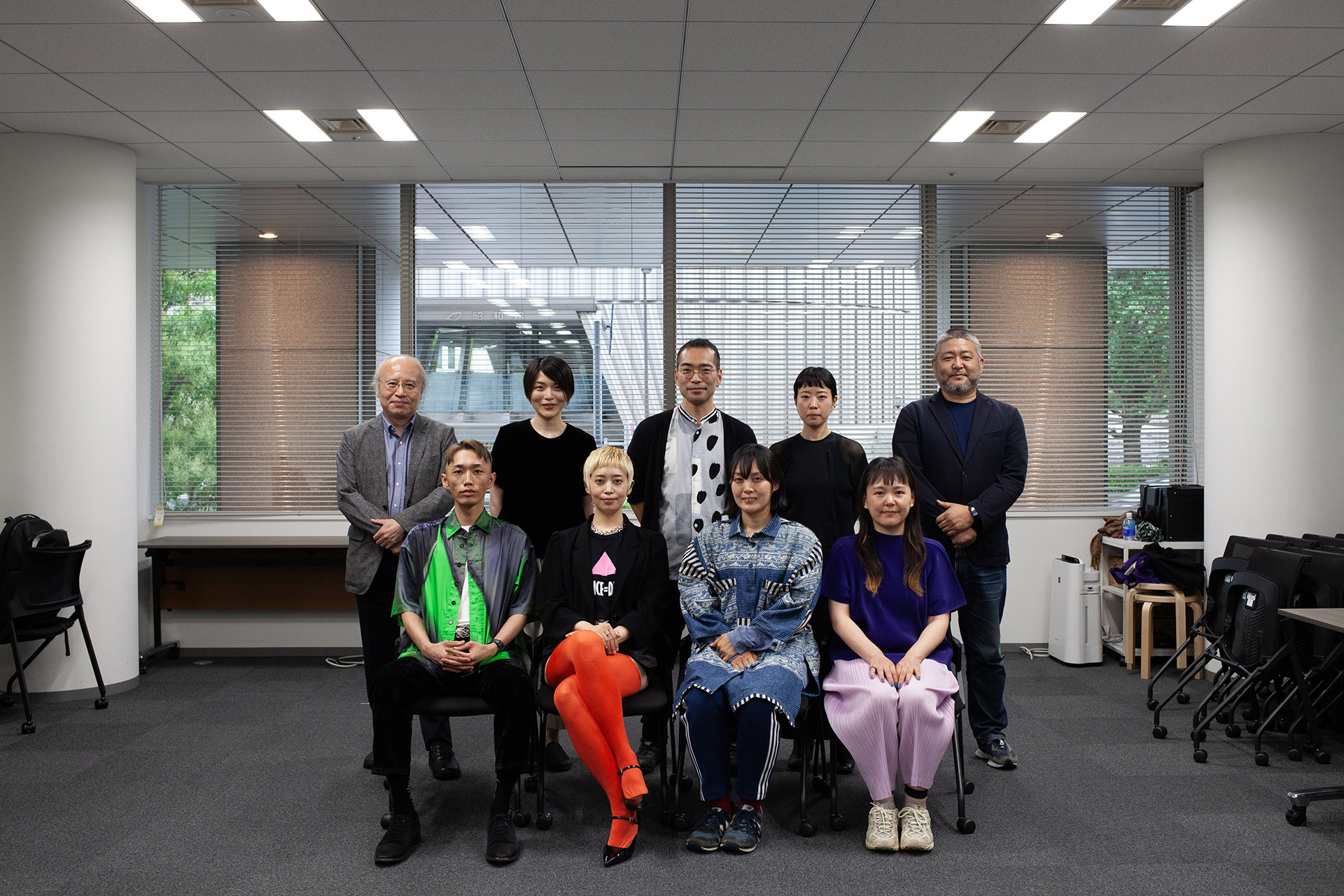
What is JUMP Meetup?
